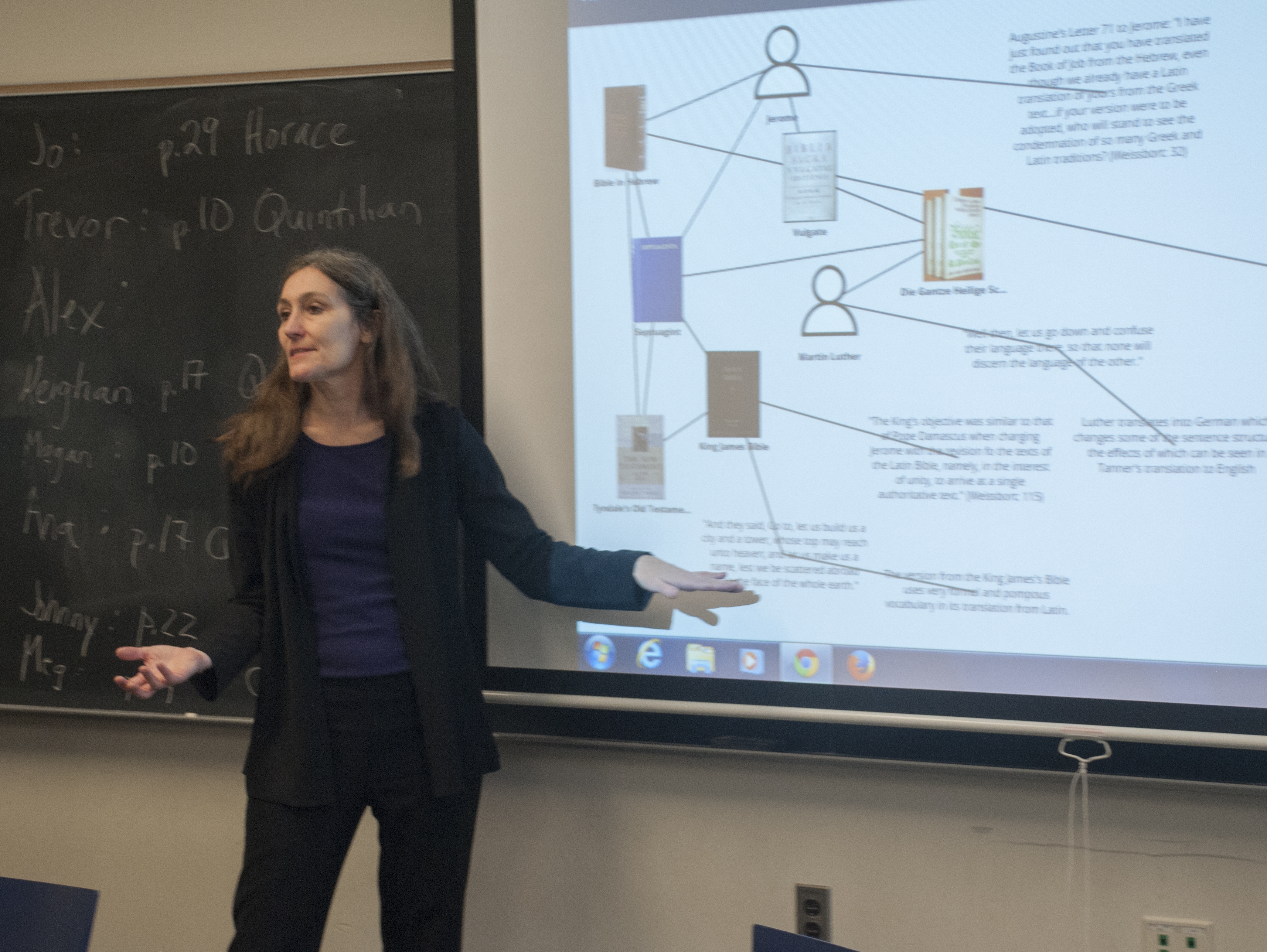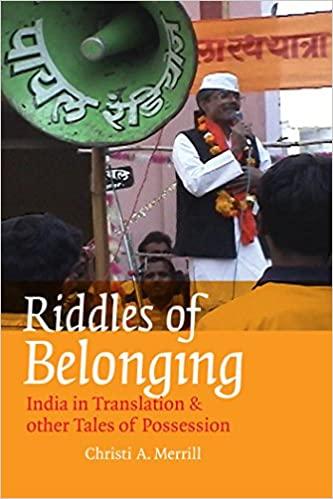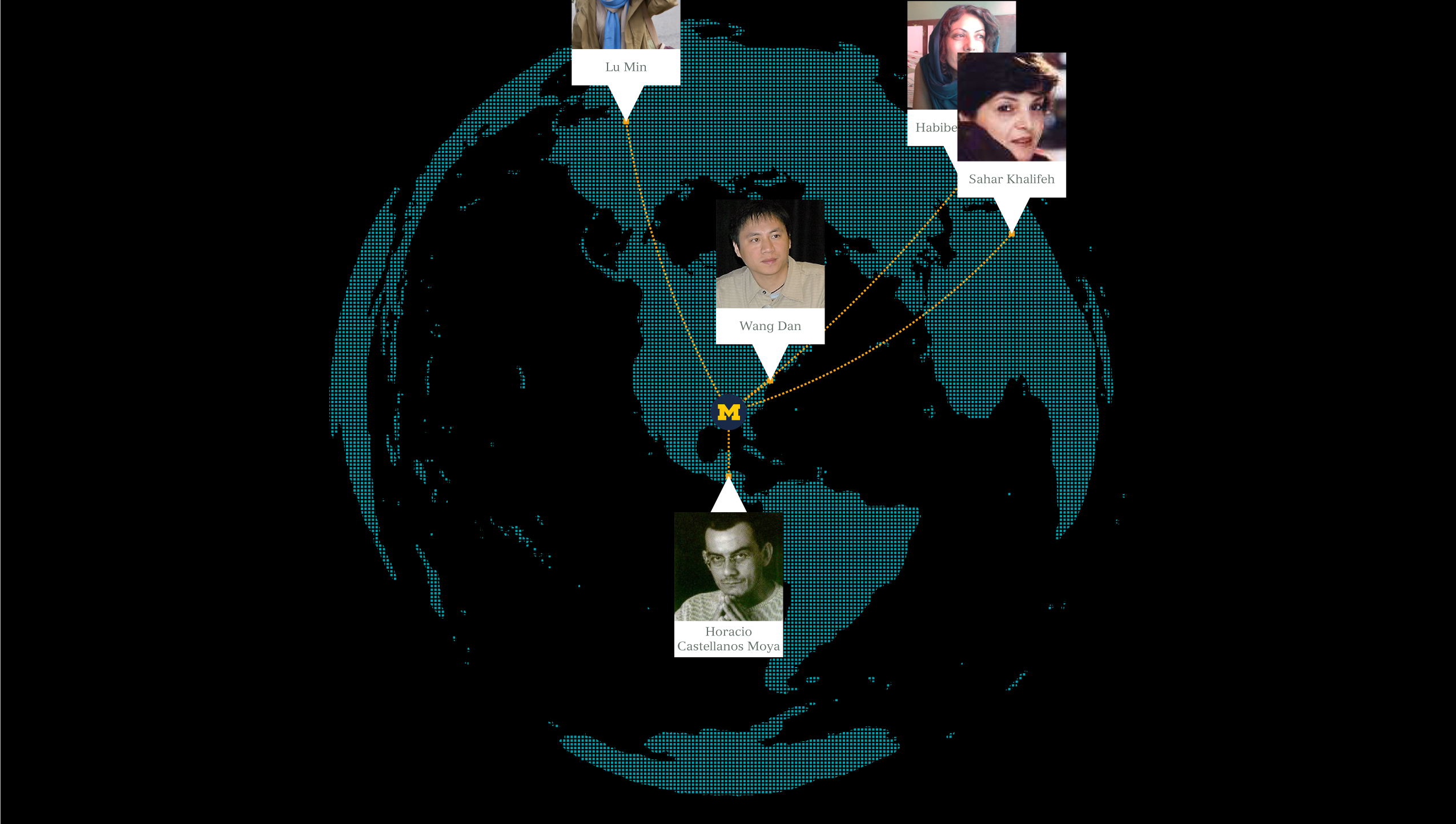Teaching Beyond Melancholy, Part 1: The Clichés of Reading in Translation
Posted on October 29, 2020

This was not the situation I had expected last summer when I first proposed a mini course for graduate students called “Writing for Words Without Borders.” The course was to meet for five three-hour stretches on consecutive Wednesdays, starting March 18, 2020. As it turned out, this meant our first class would be held exactly a week after our university president announced that all of UM would switch to remote teaching for the rest of the winter term. I happened to hear his announcement on the radio as I was driving around Ann Arbor running before-the-sky-falls errands.
I began to realize, in retrospect, that offering this mini course during the first five weeks of the Covid-19 lockdown has provided a sort of outer-limit test case for a set of challenges and possibilities many of us had already started facing before that. How do we help our students make virtual connections with writing in translation? How to help them write about that connection for others across languages?
I had taught translation courses before—for incoming freshman, upper-level undergraduates and for graduate students—and whether it was billed as a writing course or a literature seminar or some combination of the two, I invariably focused on designing syllabi that helped students learn to explain their approach to reading and writing through translation theory and practice.
Once I realized that I would be teaching the mini course during the Covid-19 lockdown, I was more determined than ever to avoid clichés around what was lost in translation—a sort of melancholic attachment to the idea of a lost original text, which I discuss in the first chapter of my book Riddles of Belonging. I had already watched “loss” deaden any appetite for reading literary work in translation. I figured we already had enough melancholy to cope with in our day-to-day lives without that.

It wasn’t just my PhD-trained fussiness that made me worry every time I heard a student sigh dramatically over an inability to read work “in the original.” I knew from experience that this lost-in-translation attitude was something they could pass along to each other like the flu, until all the students in the room were alienated from their best readerly instincts. How to teach them to read translated literature from their own set of deeply-held convictions, with clarity and confidence?
Very few students ever came into the room trusting their skills in reading translated work, but nearly all of them arrived with a cautious, well-guarded curiosity about new work and a decided willingness to try to learn how to make their reading experiences more meaningful. They often did not trust their own interpretations of any piece of literature they were given as part of a course—whether to bridle at the scandalous exoticisms of The Arabian Nights, or laugh along at Don Quixote’s buffoonery—and this sense of self-doubt only became heightened when the work was translated.
They thought their uncertainties would be solved if only they could have direct access to the literature in the original, until I reminded them—with practical examples in class—that they faced similar problems reading work written originally in English. They all seemed to be horrified, in different ways, by the misunderstandings Amy Tan or Gloria Anzaldua describe in “Mother Tongue” or “How to Tame a Wild Tongue,” and hearing their classmates describe such different interpretations of the very same sentences only enriched their appreciation of the works we had read together. Still, translated or no, their default when engaging with literary work was to look for a single, correct interpretation—usually mine, not theirs.
Once, a microbiology student in my undergraduate “Translating World Literature” course told me she had wondered, when she signed up for the course, who this professor might be who had command over every language in the world and knew every single work of literature that had ever been written. The student then became alarmed, she told me later, to discover that I was going to have students share their own reactions to poetry and prose translated from languages with which they had no familiarity — Urdu, French, Arabic, Spanish.
In translation? she repeated to me for emphasis, laughing at her incredulity. Yes, I agreed, the course was called “Translating World Literature,” after all. What did she expect? Her wide-eyed expression reminded me of the day I announced I would take the training wheels off my daughter’s bike, that she was ready to go it alone. Before that talk with the student in office hours, I had assumed she and her peers would think of the translations themselves as the training wheels.
The conversation with the microbiology major helped me understand better why so many students looked stricken when I barred them from using any variation of the lost-in-translation refrain. Especially students like the microbiology major who had spent many class hours comparing their own answers to questions a professor was spooling out on a chalkboard. And it wasn’t just students trained in the hard sciences: a course like “Translating World Literature” required advanced proficiency in a language other than English, so these were students who had already invested a lot of time and energy mastering a second or third language—whether that was the English they were translating into, or the language they were translating from—and had a healthy respect for rules that distinguished correct and incorrect usage. If they were unable to compare the translation to the original, they wondered, how would they know the translation was any good? They felt they had no basis for comparison otherwise.
The translator and translation theorist Lawrence Venuti addresses this question head on in his 1994 book The Translator’s Invisibility: A History of Translation, arguing that we do ourselves a disservice individually and collectively if we cloak our discomfort with the very fact of translation by either not reading translated work at all, or by expecting the translator to smooth over any details that sound “foreign.” Venuti starts his book by railing against “domesticating” strategies prevalent in the American publishing industry and cites the scandalously low numbers of translated works published in the US in comparison to other works being published, and in comparison to publication records in other countries.
Years later, a group at the University of Rochester turned these same statistics into an effective movement under the name Three Percent, years before another notorious group seized on it. Those Three Percenters I felt inspired by were responding with great urgency to the same grim numbers that had also spurred on the founders of Words Without Borders to start an online magazine of world literature in translation, in league with the ongoing work of the National Endowment of the Arts. Each of these ventures endeavors to address the same underlying issue Venuti draws our attention to: America’s monolingual mindset leads to collective myopia.
Venuti laments the fact that all too often the work of translators is rendered invisible in day-to-day, business-as-usual publishing decisions: the names of the translators or the language translated from are not even listed on the cover of books; often publishers do not grant translators space to introduce their readers to the context of the text they have translated, what drew them to the writing, their reasons for interpreting it the way they have, and therefore their strategies for conveying those interpretations in English. So I purposely assign books with translators’ prefaces and introductions I find exciting to read. I ask my students to think carefully about how the translator’s words shape their readings, and how they feel when the translation reads fluently or sounds “foreignized,” or when a translator decides to gloss an unfamiliar word in a footnote or parentheses, or not at all.
Venuti effectively distills some of the arguments of his books for student readers in his essay, "How to Read a Translation” published in Words Without Borders and I often assign it in my courses. It does help convince them to take off the training wheels. Even then, they still need plenty of urging before they will hazard venturing into this new territory. It’s only once they start tentatively asking questions they really care about and want answers to, rather than the ones they are guessing I want them to talk about, that they begin to connect our discussions to their own private reading experiences.

Once they hear another student struggle to put into words something they too felt in some murky way but were unsure about—only then do they begin to work together to come up with phrasing that seems pointed in the right direction, and that spurs other students to imagine that reaction along with them, and to try explaining what insights it helps them to see. Only then do they begin to leave behind their initial read-it-in-the-original reluctance.
Years ago, as a graduate student teaching required literature courses to undergraduates, I discovered that my students became more attentive whenever I incorporated translation. When I asked them to compare specific passages of an assigned text in multiple translations and describe which version worked best, they would begin arguing energetically about the relative merits of one over another, describing how their interpretation of a given line affected their understanding of the piece as a whole, even quoting specific phrases to convey their perspectives. It seemed like an instructor’s dream come true, turning their innate skepticism into a productive exercise.
I told this once to the great translator, translation theorist and teacher Carol Maier and she called it “the oldest trick in the book.” Carol reminded me of Eeyore somehow as she sighed, trying to be patient with me, the new, upstart teacher. Comparing different translations of the same literary work is only possible for classics, she pointed out, before adding dramatically: and only then, classics for which numerous published translations exist. What about teaching new work?
I agreed with her then, as I do now. And argued with her then in real time as I do now in my head, that at least these comparisons offer students a method to practice. And a way of moving us all away from approaching translation as a zero-sum game. Reading multiple translations of the same works helps us all see that the translators are working in league with what they imagine the authors were setting out to do, as shaped by all of us in this vast network of passionate readers making work available—authors and translators, editors, teachers, fellow readers—even though few of us have access to both languages being translated from and into.
That is one of the teaching experiences that started me daydreaming about developing a four-dimensional, dynamic, digital version of a blackboard that would allow us to trace the connections we found between works across time and space—whether it was the same exact text, or comparing something similar across different translated works. I began collaborating with a librarian, a computer scientist, and an artist, and teams of undergraduates and graduate students with expertise in programming, design and Information Science to develop and adapt research tools that helped us visualize in greater dimensionality the vast, intricate Translation Networks we were engaging with dynamically and collectively.
One semester, I asked students to compare specific lines from different translations of the story of the “Tower of Babel” in Genesis because it offered so much insight into our ideas about translation in a European language like English, and as well as how we think about multilingualism in our global community. Rather than shy away from the Judeo-Christian underpinnings of so many of our conversations around reading across languages, my students and I took this opportunity think carefully about our expectations that a translator be “faithful.” Faithful to what?
I had planned to ask a version of this same question in the mini course “Writing for Words Without Borders” but with a different emphasis. These were graduate students, and the aim was not on producing translated work, but on writing about translated work in a way that would help introduce readers to their ways of connecting to the work in translation---whether they were high school students in nearby Ypsilanti or high school teachers in Puerto Rico. If they pictured themselves connecting imaginatively to an author writing in Arabic, Chinese, Farsi or Spanish (to reference the examples they ended up being drawn to), which keywords helped facilitate that connection?

The question resonated with Gayatri Spivak’s observation in her essay on “The Politics of Translation” calling translating “the most intimate act of reading”. I wanted my own graduate students to experience something similar, and started to design exercises for them that would combine the critical and the creative, helping them draw on their own experiences as avid readers, scholars, and teachers. However pie-in-the-sky the idea might have been, I wanted the course to focus on what students cared most about, and maybe even… if we were lucky…to help them rediscover what had drawn them to graduate school in the first place.
Editors' Note: Preview Student Writing

Please stay tuned for the next parts of this essay series on teaching literature, writing, and translation in the age of Covid, to be posted over the next few months! For a preview of what you'll be reading, take a look at Christi Merrill's first-day writing exercise, "The Reader I Am" (in response to the painting above) and then read her students' writing.

Christi A Merrill teaches courses on reading and writing about literature in translation at both the graduate and undergraduate levels through the Departments of Comparative Literature and Asian Languages and Cultures at the University of Michigan. She is author of Riddles of Belonging: India in Translation and other Tales of Possession (Fordham University Press, 2009), a study about translating the oral-based stories of Rajasthani writer Vijaydan Detha. Her translations of two of Detha’s stories, "Untold Hitlers" and "True Calling, were published in Words Without Borders, along with a short essay on riddles of copyright when translating a “folktale” like Detha’s “True Calling."
Her translations of Detha’s stories were published in the two-volume Chouboli and Other Stories by Katha (New Delhi) and Fordham University Press (New York) and won the 2012 A. K. Ramanujan Award for translation from the Association of Asian Studies. More recently she has co-edited with Laura Brueck a special issue on “Rewriting Caste: Dalit Literature in Hindi” for the October 2018 issue of Words Without Borders.



